For Professionals, By Professionals

Discover ProX PC for best custom-built PCs, powerful workstations, and GPU servers in India. Perfect for creators, professionals, and businesses. Shop now!
SERVICES
WE ACCEPT









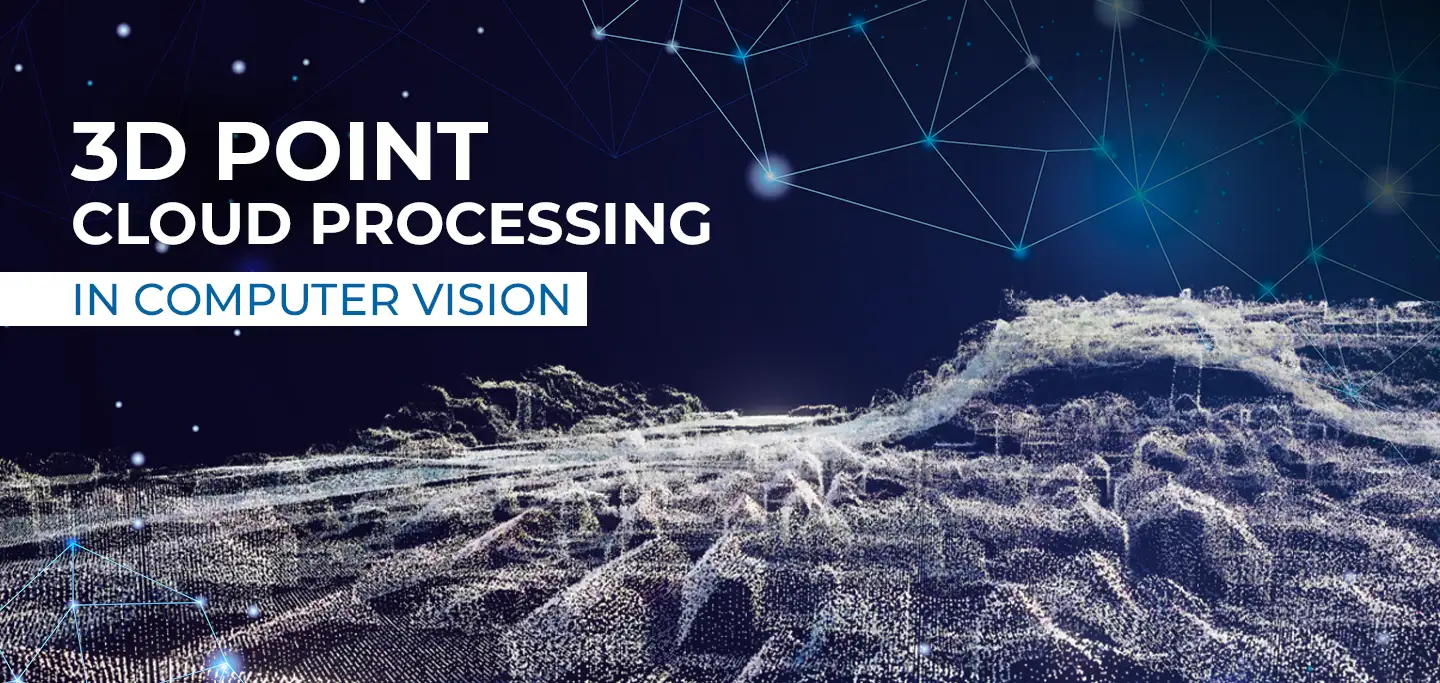
Contents
In many computer vision applications, engineers gather data manually. The Point Cloud Processing involves a set of tiny points in 3D space, i.e. points captured by a 3D laser scanner. Each point in the cloud contains rich information, such as three-dimensional coordinates (x, y, z), color information (r, g, b), surface vectors, etc.
These data represent the spatial distribution and surface characteristics of the target. Manual gathering often leads to the collection of inaccurate or missing data, time spent on a location, and higher expenses for the customer.

3D Data Representation of a Rabbit
About us: ProX PC provides a robust end-to-end computer vision infrastructure. Our software helps several leading organizations start with computer vision and implement deep learning models efficiently with minimal overhead for various downstream tasks. Explore ProX micro edge devices.
What are Point Clouds?
A point cloud data is a comprehensive digital elevation presentation of a 3-dimensional object. High-tech instruments like 3D scanners, LiDAR, and photogrammetry software measure the x, y, and z coordinates and capture the object’s surface. Each of these points tells us about the object’s shape and structure.
E.g. when scanning a building, each point cloud represents a real point on the wall, window, stairway, or any surface the laser beam meets. The scanner combines the vertical and horizontal angles created by a laser beam to calculate the x, y, and z coordinates. Each point generates a set of 3D coordinate systems with RGB and intensity data.
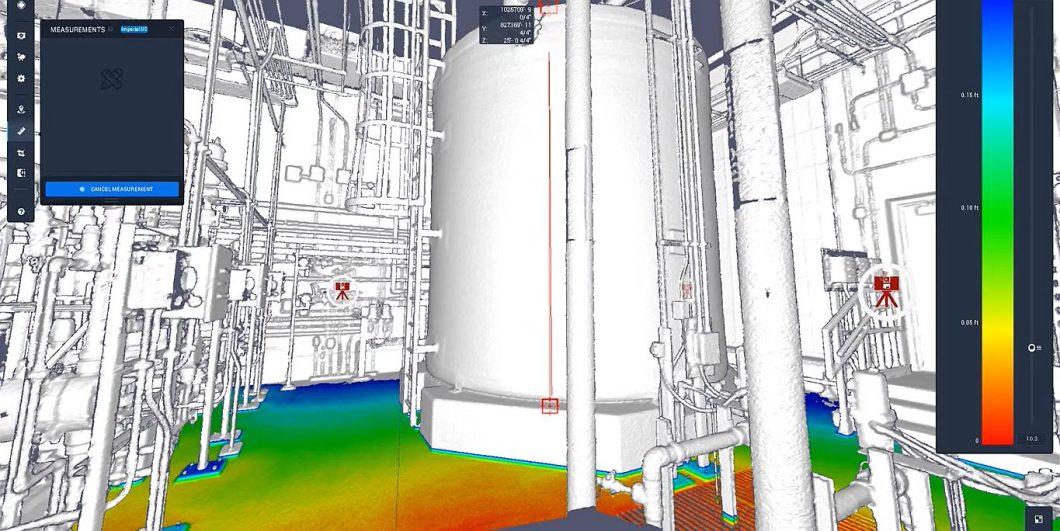
3D Scanner gathering Point Clouds Data
A denser representation with points generates finer characteristics, such as texture and tiny features. The point cloud contains tiny points when we zoom on it. A region with more points will show the scanned environment more clearly.
How are Point Clouds Generated?
Point cloud creation means capturing an area by taking many point measurements using a 3D laser scanner. You can quickly build a cloud using a mobile mapping device, static-based Lidar, or mobile phones empowered with Lidar point cloud.
Static Scanning
Static scanning uses a Terrestrial Laser Scanner (TLS) attached to a tripod. It generates the point cloud by scanning a series of overlapping locations, ensuring it covers all angles of a mapped area. Therefore in the post-processing phase, the individual datasets merge to create one accurate point cloud.
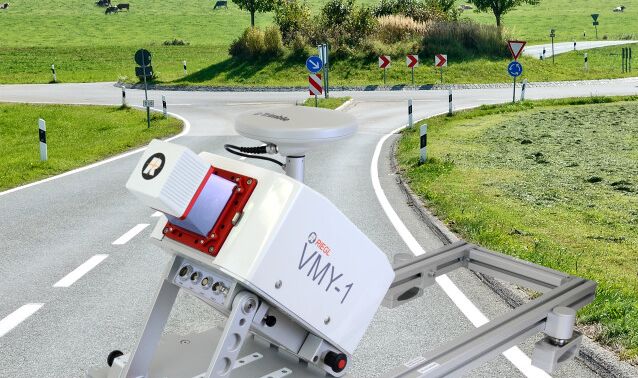
Point Cloud gathering by Mobile Mapping
Mobile Mapping
Mobile mapping performs a similar process, although less accurate. However, mobile mapping conducts scans on the move. The scanner is mounted to a vehicle or drone so that mobile scanning can produce better results. Therefore, a single cloud is the result of post-processing of merging points from multiple scans.
Point Cloud Processing Methods
Computer vision algorithms provide point cloud processing functionalities that include: point cloud registration, shape fitting to 3-D point clouds, and the ability to read, write, store, display, and compare point clouds.
Point cloud processing methods build a map with registered point clouds, optimize the map to correct the drift, and perform map localization. Many of these methods utilize deep learning and Convolutional Neural Networks (CNNs) to create point cloud processing.
Deep Learning Convolutional-Based Method
Processing irregular, unstructured point cloud data remains a formidable challenge, despite the deep learning’s success in processing structured 2D image data. Many studies attempt to use 3-dimensional CNNs to learn the volume representation of 3-dimensional point clouds. They are motivated by the remarkable success of CNNs on two-dimensional images.
Boulch et al. (2020) proposed a generalization of discrete CNNs. They intended to process the point cloud by replacing discrete kernels with continuous ones. This approach is straightforward and allows the use of variable point cloud sizes for designing neural networks similar to 2D CNNs.

Convolutional layer with 2 steps: spatial structure computation and convolution operation
GAN-based Point Cloud Processing
Generative Adversarial Networks (GAN) have demonstrated promising results in learning different types of complex data distributions. Some researchers showed that a simple modification of the current GAN technique is unsuitable for point clouds. The reason for that is the constraints of the undefined discriminator.
L. Li et al.(2018) proposed a two-fold modification of the GAN learning algorithm to process point clouds (PC-GAN). Firstly, they adopted a hierarchical and interpretable sampling procedure combining concepts from implicit generative models and hierarchical Bayesian modeling.

Overview of Point Cloud GAN approach
A main part of their method is to train a posterior inference network for the hidden variables:
Transformer-based Point Cloud Processing
Transformer models have gained significant interest in 3D point cloud processing and have demonstrated remarkable performance across diverse 3D tasks. Fan et al. (2021) proposed a novel Point 4D Transformer network to process raw point cloud videos. Specifically, their P4Transformer consists of:
(i) Point 4D convolution to embed the spatiotemporal local structures presented in a point cloud video, and
(ii) Transformer to capture the appearance and motion information across the entire video. Also, it performs self-attention on the embedded local features.
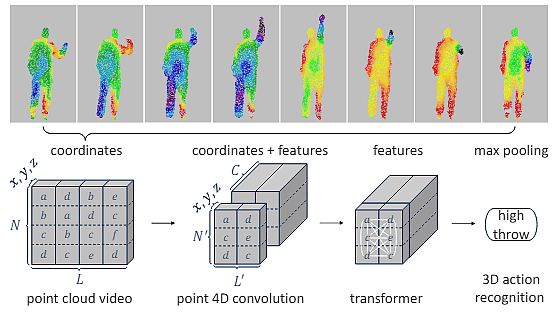
Transformer Encoder Architecture for Point Cloud Processing
Learned Gridification for Point Cloud Processing
V.D. Linden et al (2023) proposed learnable gridification as the first step in a point cloud processing pipeline to transform the point cloud into a compact, regular grid.
To put it briefly, gridification is the process of connecting points in a point cloud to a number of points in a grid utilizing bilateral k-nearest neighbor connectivity. Researchers perform it via a convolutional message-passing layer operating on a bipartite graph. The proposed k-nearest neighbor allows for the construction of expressive yet compact grid representations.
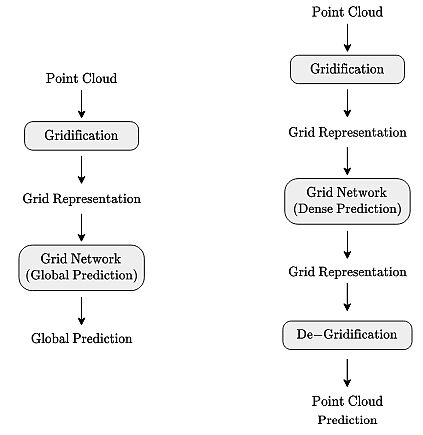
Point Cloud Processing Pipeline for Global Prediction (left) and Dense Prediction tasks (right)

Average time (left) and GPU allocation (right) during inference on ModelNet40 for a batch size of 32
Applications of Point Clouds
Point cloud technology has become a state-of-the-art tool with a wide range of applications in several industries in recent years. It involves the collection of data points in a 3-dimensional space, i.e. highly detailed representations of real-world environments.
Architecture and Construction
Architects, builders, and designers can precisely measure the site and plan the project with the help of point cloud modeling. All team members have access to the information required to develop the project, thus improving communication and cooperation.
Construction businesses utilize point clouds to lay the basis for a building design. By using point clouds they create a 3D model of the old building, such as a historical site that requires particular attention.

Point Clouds Application in Construction
3D Mapping and Urban Planning
Point cloud technology also transformed traditional mapping and urban planning. By capturing millions of sets of data points with laser scanners or photogrammetry, it enables the creation of highly accurate 3D maps of landscapes, buildings, and infrastructure.
Point cloud data produce 3D models of all the structures, roads, and other features in cities. They specify the locations of objects and their heights. It looks like having a blueprint for metropolitan regions, and it helps plan how cities evolve.
Virtual Reality and Augmented Reality
Virtual reality (VR) and augmented reality (AR) immersive experiences utilize point cloud data intensively. Users can explore virtual surroundings with exceptional realism by incorporating point cloud models into VR/AR settings.
Quality Control and Industry Inspection
In an industrial environment, point cloud generation has an important role in inspection and quality control processes. By capturing accurate 3D representations of manufactured objects, it enables precise measurements, defect detection, and structural analysis.
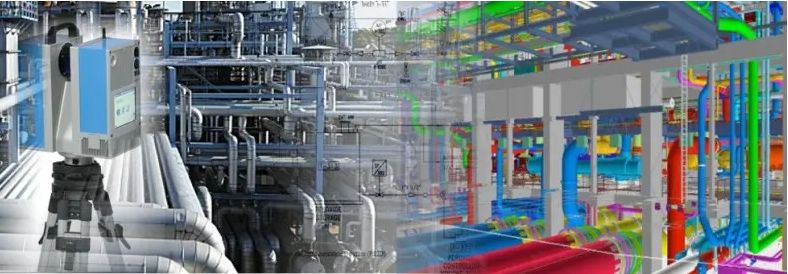
Point Cloud Application in Industry Inspection
Point clouds enable the identification of safety risks, proactive safety management, aiding with safety in construction operations, recognition of construction machines’ blind spots, etc.
Robotics and Autonomous Vehicles
The development of robotic systems and autonomous vehicles (AVs) depends heavily on point cloud technology. LiDAR sensors let autonomous vehicles (AVs) scan and navigate complex environments. They utilize point cloud data to identify obstacles, determine the best route, and prevent collisions.
Summary
The goal of point cloud technology is to enable companies in the industrial sector to collect data smoothly. With the use of this technology, the teams shorten their project cycle times and get high-quality, faster outcomes. Therefore, it provides great advantages and benefits in carrying out many engineering projects.
For more info visit www.proxpc.com
Related Products


Share this: